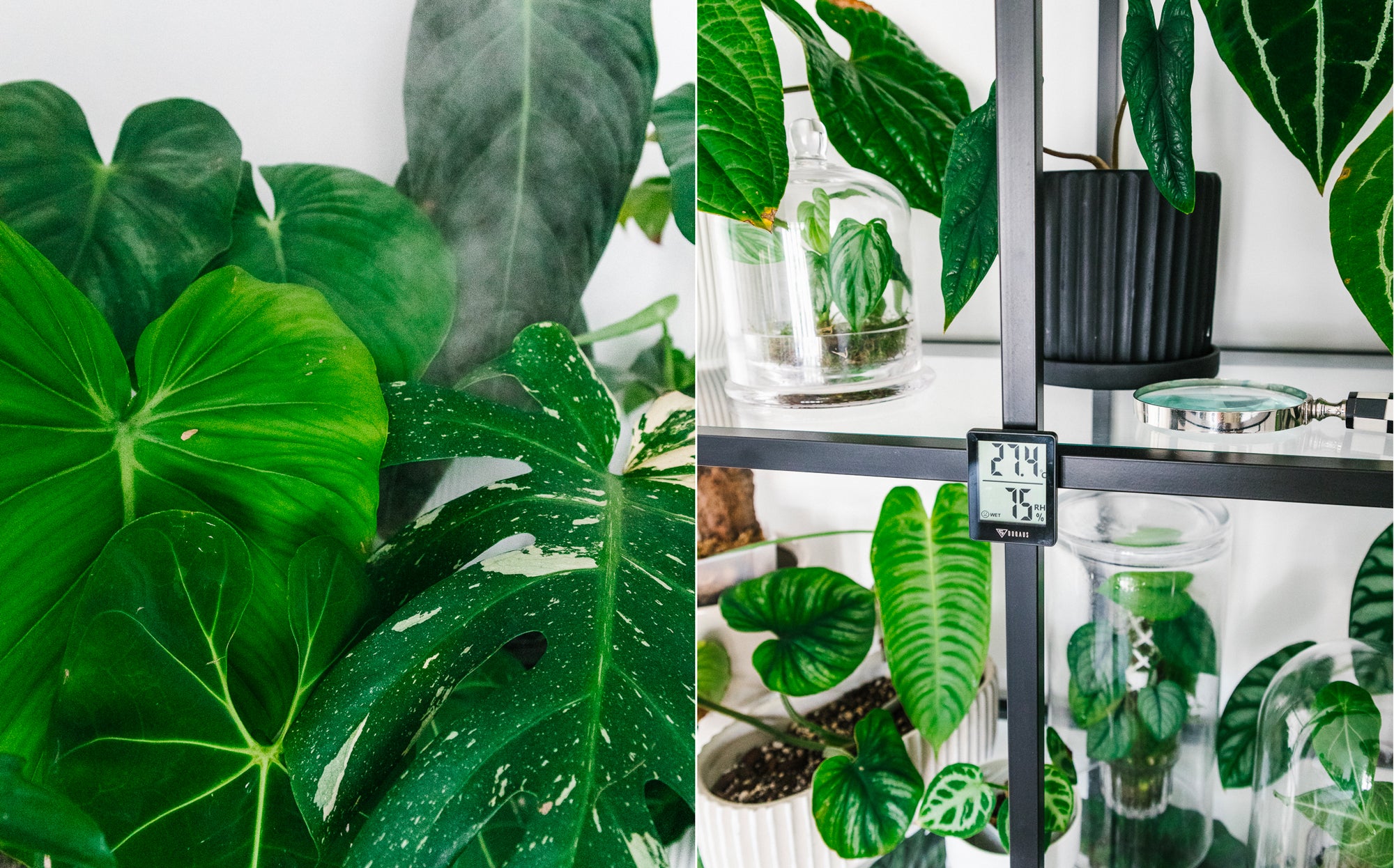
Do you have a Fern that seems hopeless, or maybe an Alocasia that looks like it wants to give up? Perhaps you recently picked up some lush looking Calatheas over the weekend, but after some time of them acclimating to your environment you start to notice those luscious leaves turning crispy and the new unfurling leaves are already damaged!?… Well this may be caused by the lack of humidity in your home.
The air around your plant is an important aspect when keeping tropical house plants. High humidity increases photosynthesis, therefore increasing the rate of growth - sounds pretty good right? The stars of the show have to be the Stoma & Stomata. The Stoma consist of microscopic holes which act like the pores on the surface of leaves. These ‘pores’ control gas exchange for photosynthesis.
As the interface between leaf and atmosphere, Stoma have the very important job of making sure no important molecules are needlessly lost whilst they are open. Cells that are just inside the Stoma try to capture CO2 for photosynthesis. These cells are relatively very wet, and when exposed to the outside air they can lose water molecules via evaporation if the air is too dry.
When the air is dry, the Stoma close to avoid losing precious water, however when closed they are also losing the opportunity to absorb CO2 from the air. When humidity is high, the concentration of water vapour in the air is likely to be higher or about even to the concentration of water in the wet cells, resulting in very little evaporation of the plant’s water. This is a good thing! This means the Stoma can be wide open, absorbing loads of CO2 and the plant won’t have to worry about any water loss either.
Oh and don’t forget O2! Another role of the Stoma is to act as an exit for Oxygen, which is a waste product made from the photosynthesis reaction. So when the Stoma is closed due to dry air, the plant cannot effectively expel this waste. When O2 and CO2 are out of balance, this slows photosynthesis right down. This is because O2 binds with important enzymes used in photosynthesis, meaning they can't do their job of breaking down CO2.
So we are starting to really see how humidity can effect the amount of ingredients the plant needs to photosynthesise. Photosynthesis produces carbohydrates for the plant to use as building blocks to make new tissues (aka pretty foliage that we all love). Without high humidity, these ingredients become unbalanced and in short supply, slowing growth and making weak-ass, teeny tiny leaves that no one really wants.
Plants in your home will usually prefer humidity around 60% which is a lot higher than most UK home environments. If you have more unusual and sensitive plants, they may even demand more than that.
For extremely sensitive plants that hate low humidity we recommend placing them under a cloche, in a Terrarium or cabinet - this way those plants can live in a consistent and humid environment, which will help them to thrive!
If you’re starting out we’d recommend purchasing a hygrometer, this way you can measure the humidity levels in your home. If you find your space naturally has low humidity, you may want to find other ways to raise it.
Humidifiers have become a big 'must have' in the plant community, because they allow you to replicate one of the key elements that jungle environments have to offer. This is an easy and reliable way to raise humidity, though it may be an expensive investment, there are other perks of owning a humidifier. They’re really good for skin issues, air quality, furniture and woods.
There are other ways to raise humidity, though misting plants is a temporary solution, you can always use pebbles trays and grouping plants - this can create a microclimate allowing the humidity to rise.
In winter it can be a lot harder to keep your environment consistent because of central heating, fireplaces, and other plug in heat sources. This can cause the air to dry out a lot faster, so your plants may start to struggle during this time. This is probably the season you want to keep a close eye on humidity levels. If you do purchase a humidifier to use during the winter months just be cautious about leaving it on for too long. If your space lacks airflow, this may cause unwanted mould.
Keep in mind that here in the UK, humidity will tend to drop dramatically if an external door/window is open, so just be aware of your plants surroundings. But remember consistency is key! If you keep your environment consistently warm alongside keeping the humidity around 60%, you should see your diva plants start to appreciate it.

